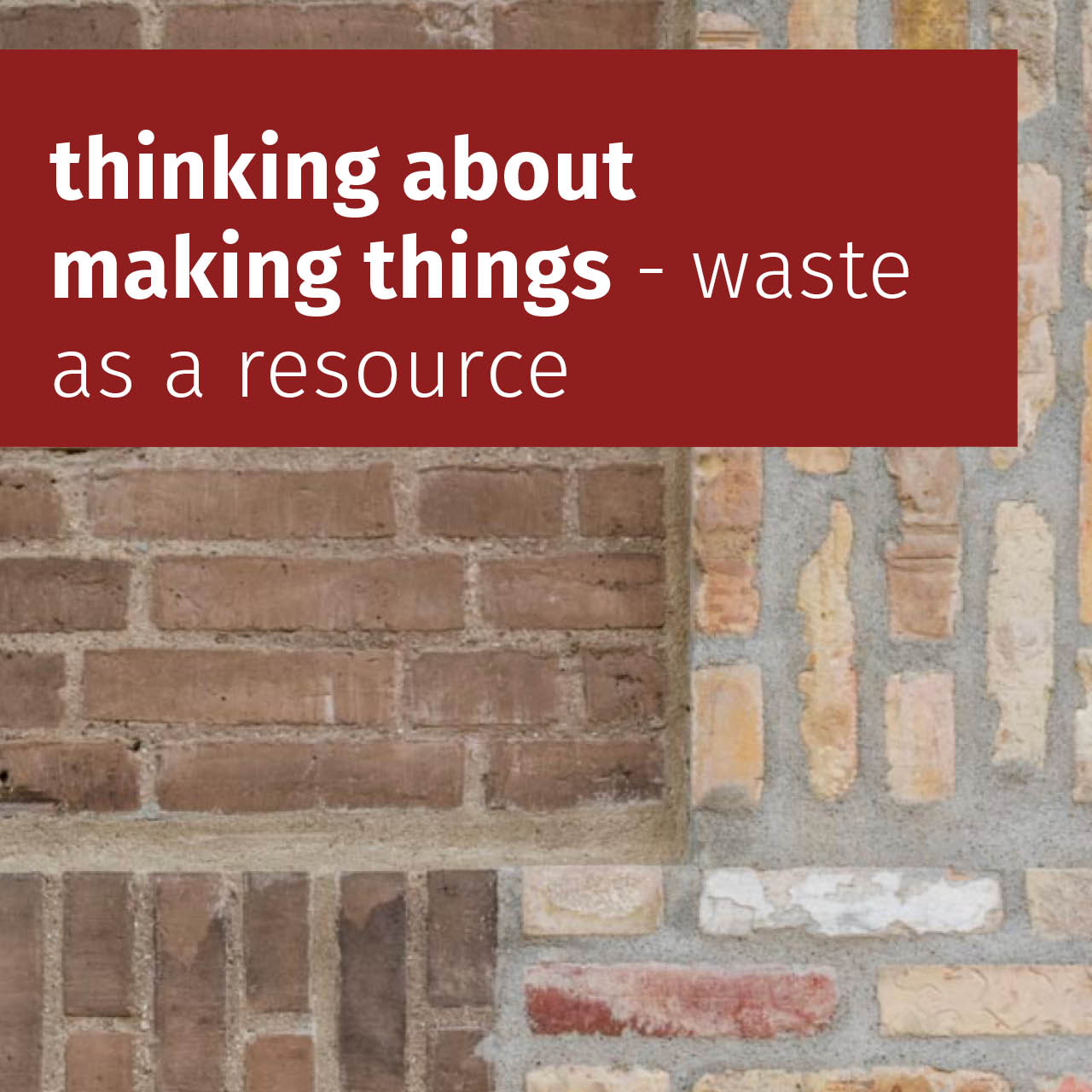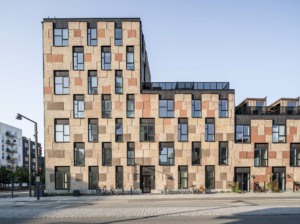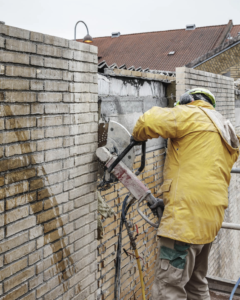
For the Ellen McArthur Foundation the circular economy is based on three principles that are driven by design; eliminate waste and pollution, circulate products and materials at their highest value and regenerate nature. They identify two loops through which materials can circulate – one for technical materials (that can’t biodegrade like metals and plastics) and one for biological materials such as timber and cotton that can biodegrade.
The architect/researcher Duncan Baker – Brown highlights how of the UK’s consumption of 600 million tonnes of material each year 200 million tonnes are wasted – 60% in construction. For every seven houses built, one goes to landfill. There also remain ethical issues to the sourcing of construction materials as for the fashion industry. For many materials used the supply chain is hidden and not enough is known about the impact of their extraction, processing and transportation.
Materials need to be used far more thoughtfully. This will be driven in part by the introduction of new policy standards such as through London’s Circular Economy Statement the application of ESG reporting for publicly traded companies and moves towards supply chain decarbonisation.
As Duncan Baker Brown explains it’s time to fall out of love with concrete and use timber for structures above ground. The Construction Material Pyramid visualises the relative environmental impacts of different building materials. It shows how timber is carbon negative whilst concrete uses 288kg/Co2/m3 and steel 883kg/CO2/m3.
We also need to treat waste as a resource and develop circularity in the disassembly and reuse of building materials.
- Resource Rows – ninety-two apartments and row houses in Oerestad, Copenhagen by Landager used recycled brick and timber. The design team developed an innovative way of recycling modern bricks jointed with hard cement mortar by cutting them into panels. It turned 463 tonnes of waste into useful materials and saved almost 1/3 CO2.
- RotorDC is a cooperative that organize the reuse of construction materials based in Brussels. Their website is a library of re-usable building materials and artefacts. Similarly, the Enfield Excess Material Exchange is set up to make available the materials from building demolition at the Meridian Water Development.
- Buitenplaats Brienenoord a new community centre in Rotterdam by Superuse Studios (an international collective for circular and sustainable design) for the Fondation Grondvesten reused 90% of an existing building.


William McDonough co-author of Cradle to Cradle says we need to eliminate the concept of waste. He also highlights how design is important as ‘the first signal of human intention’. Buildings should be designed for next use, for adaptation, disassembly and reuse. Wisely he says don’t only start with numbers start with values, begin by asking what is the right thing to do?
References:
- The Circular Economy, Urban Design Group Journal, Autumn 2022
- Sarah Ichioka and Michael Pawlyn, Flourish, Design Paradigms for Our Planetary Emergency, Triachy Press 2021
- Duncan Baker – Brown, The Re-Use Atlas: a designer’s guide towards a circular economy – RIBA Publishing, 2019
- Braungart and Mc Donough, Cradle to Cradle, Remaking the way we make things, Vintage, 2008
- The Construction Material Pyramid, Centre for Industrialised Architecture, The Royal Danish Academy
Image – Resource Rows, Landager
… … …
October 2024